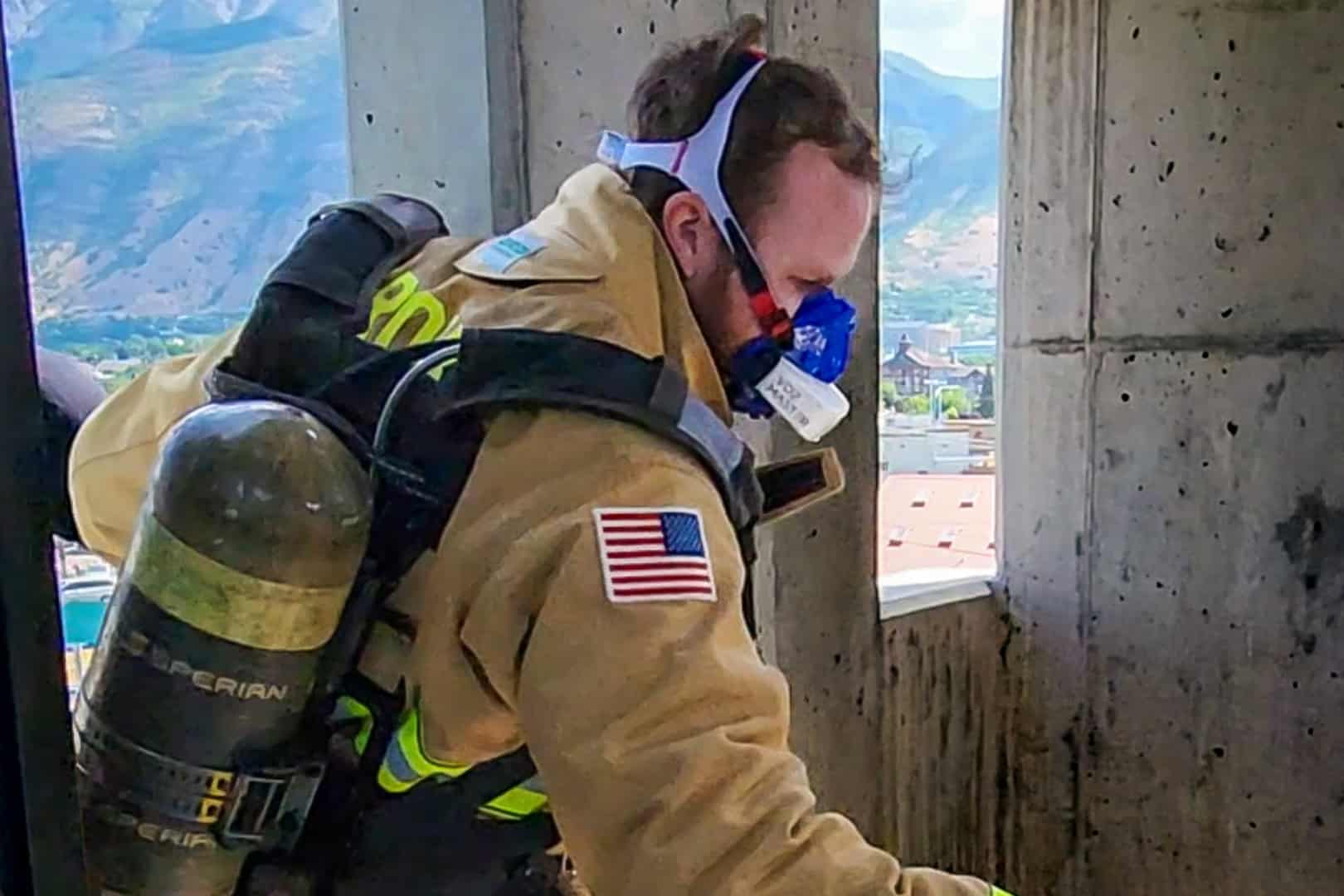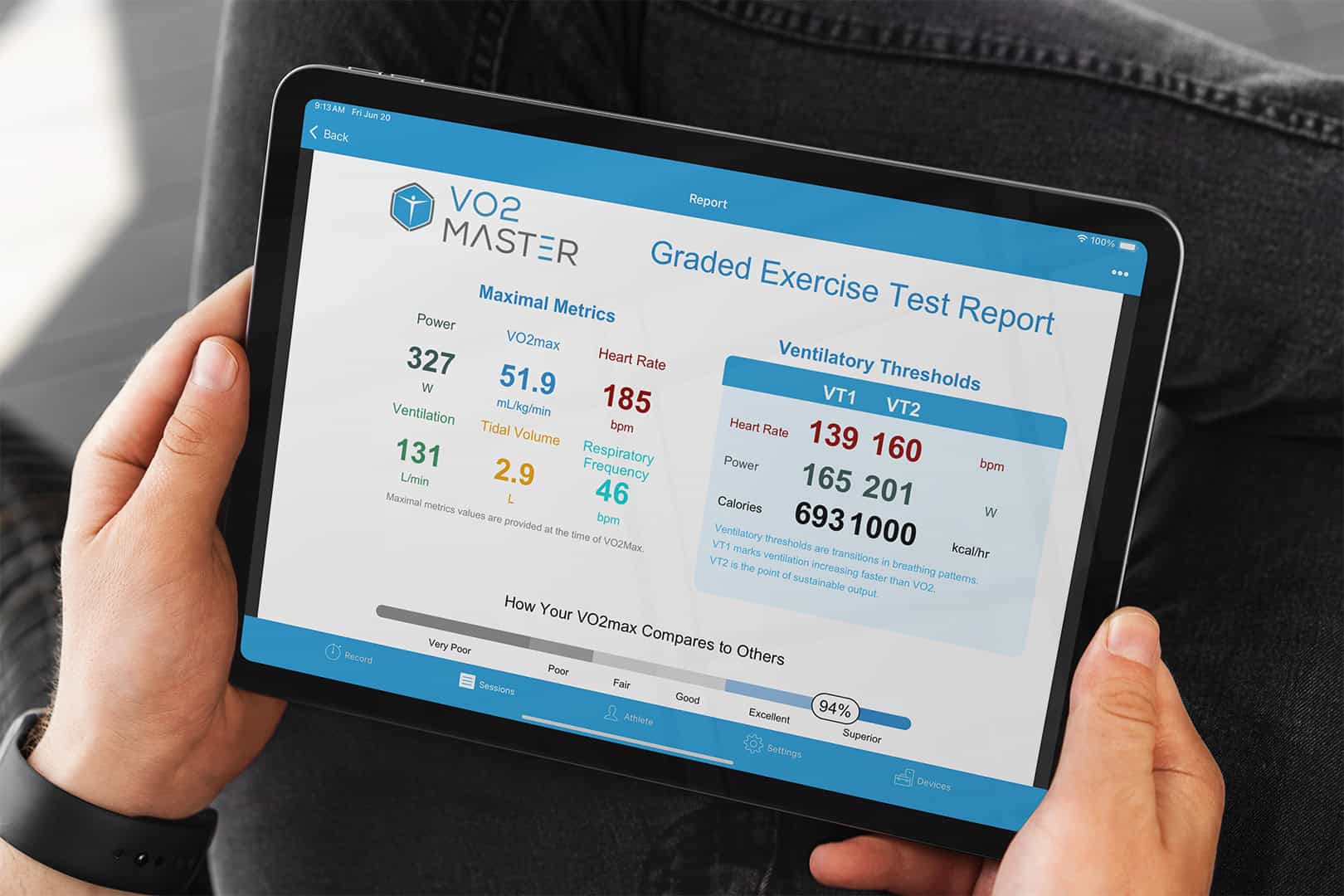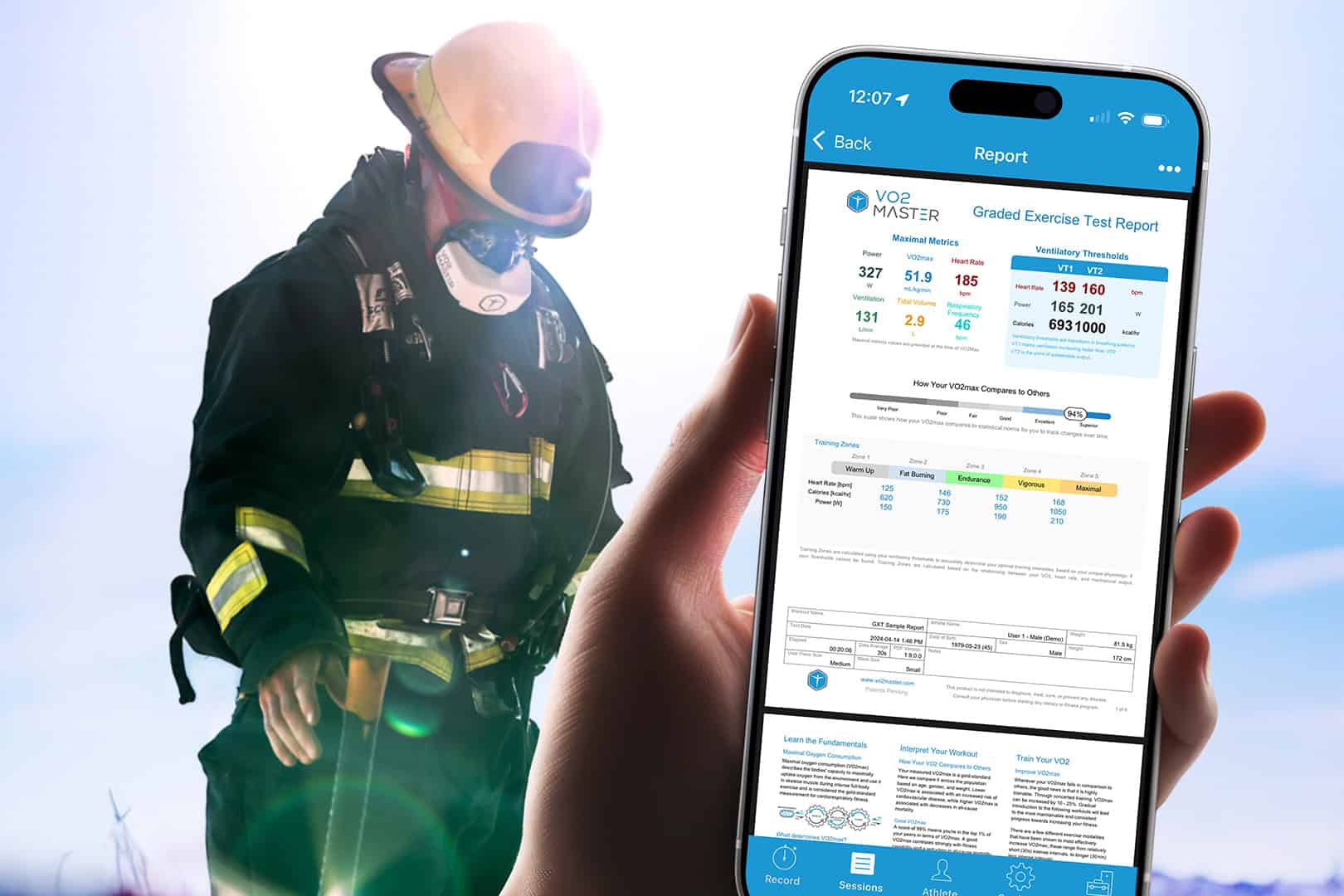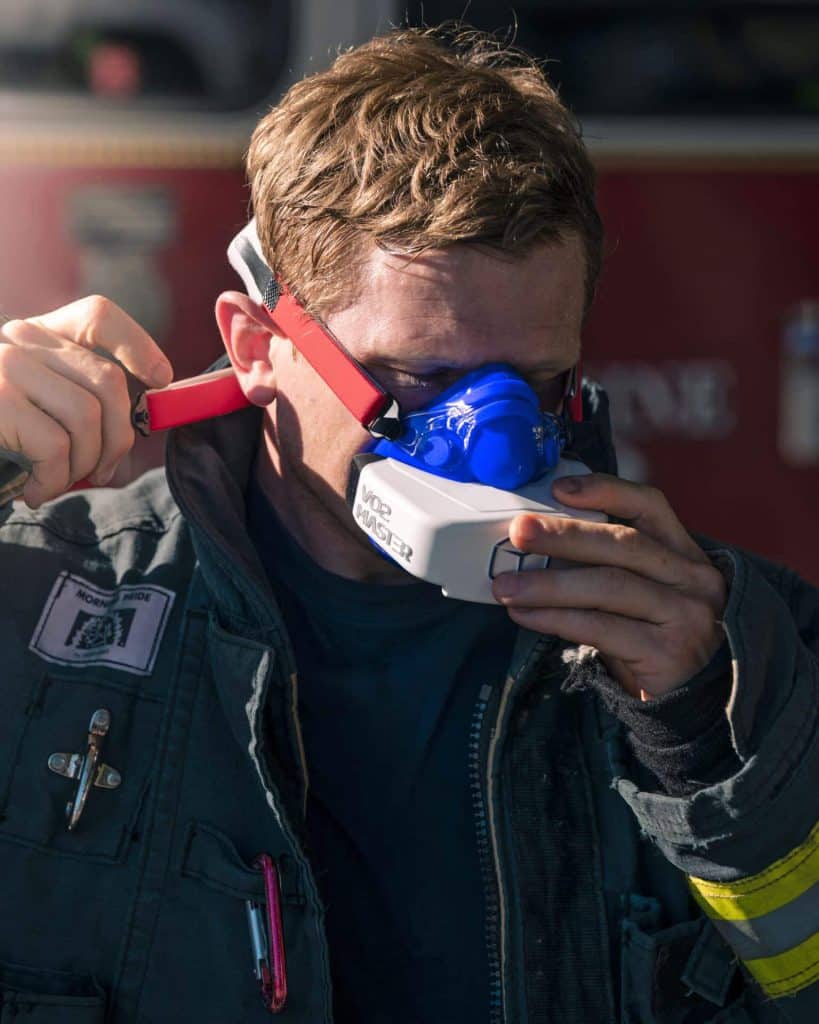Advancing Firefighter Readiness in the USA: Dr. Higuera’s Insights on Portable VO2 Testing
VO2 max is more than fitness. It’s a biomarker of firefighter readiness, resilience, and recovery. Here’s what testing reveals about health and survivability.

Written by Dr. Daniel Higuera, PhD.
Dr. Daniel Higuera, PhD, has spent the past decade conducting portable VO2 testing for firefighters in the USA, evaluating thousands across departments of all sizes. In this brief blog, he shares field-tested insights on VO2 max, ventilatory thresholds, and operational readiness, grounded in NFPA-informed practices
“Over the past decade, I’ve assessed the VO2 max of thousands of firefighters across departments of varying sizes and workloads .
These assessments have been used to track wellness outcomes and draw meaningful conclusions about fitness, recovery, and resilience in one of the most physically and psychologically demanding professions.
What the data continues to show is that VO2 max is a critical biomarker of operational readiness and long-term health.
This article outlines four of the most valuable lessons I’ve learned through this work.
Irrespective of how VO2 max data is collected, what matters is how we use these insights to improve firefighter health, training, and survivability.
1. VO2 Max Reflects Resilience
VO2 max refers to the maximum volume of oxygen the body can utilize during intense exercise.
In simple terms, it is a measure of how efficiently the cardiovascular and muscular systems can extract, transport, and use oxygen. In firefighting, where the margin for error is small and physical demands are high, this efficiency matters greatly.
The research is consistent.
A VO2 max above 40 to 43 ml/kg/min is typically considered the minimum required for safe and effective performance on the fireground. (iv)
Below this threshold, firefighters are more likely to be fatigued early (i), consume air more rapidly during SCBA use, and recover more slowly following strenuous activity (ii).
Those above the threshold tend to show better economic movement, greater tolerance to heat and gear, and a quicker return to resting physiological states.
But VO2 max also serves as an indicator of resilience.
Numerous studies now demonstrate that individuals with higher aerobic capacity experience reduced physiological responses to psychological stress. They show improved heart rate recovery, higher heart rate variability (HRV), and lower systemic markers of stress-related wear and tear (v).
In firefighting, this means a fitter individual is not only more capable during a call but is also more adaptive in the hours and days that follow.

2. Real-Time Threshold Data Changes How We Prescribe Training
This one is for the aficionados.
One of the most powerful uses of portable metabolic analyzers is the ability to capture ventilatory thresholds during exercise. These thresholds, commonly referred to as VT1 and VT2, indicate when the body shifts from primarily aerobic energy systems to more anaerobic ones (vi).
In practice, this means we can now prescribe heart rate-based training zones with far greater precision. Instead of relying on broad estimations like 220 minus age, we can anchor an individual’s training to their real physiological limits.
For firefighters, this has immediate benefits:
- Training below VT1 (Zone 2) builds aerobic capacity, improves mitochondrial efficiency, and enhances recovery between bouts.
- Training around VT2 (Zones 3 to 4) develops the capacity to buffer lactate, tolerate high-intensity work, and sustain effort under duress.
This level of specificity helps eliminate the guesswork. It also improves motivation.
When firefighters understand exactly why they are training at a given intensity that is reflecting of their own physiology, they tend to be more consistent, more engaged, and more likely to track progress over time.
3. Data Creates Accountability
Fitness discussions in the fire service can easily become subjective or emotionally charged. Terms like “in shape” or “out of shape” lack clarity and often discourage those who need support the most. Data changes that dynamic.
When firefighters are shown their actual VO2 max, ventilatory thresholds, and caloric expenditure in real time, the conversation becomes more objective and therefore grounded.
The message shifts from “you should work out more” to “your VO2 max is currently below the NFPA-recommended range for operational safety.”
The purpose of this information is not to shame but to guide. It allows us to develop a structured plan, monitor progress over time, and evaluate how effectively interventions are working.
Repeated testing over time reinforces this accountability. It also helps correct common misconceptions.
Many firefighters assume that strength training alone is enough to maintain job readiness. However, when confronted with suboptimal VO2 max values or early thresholds during testing, it becomes clear that cardiovascular conditioning must also be prioritized.

4. Cardiorespiratory Fitness Influences Mental and Emotional Recovery
Firefighters are exposed to many types of stress: physical, psychological, and chronic physiological stress.
Sleep disruption, critical incidents, shift work, and cumulative trauma are all part of the job.
Cardiorespiratory fitness may play a critical role in helping firefighters process and recover from those exposures.
Studies have shown that firefighters with higher VO2 max levels exhibit less autonomic reactivity to acute stress (iii). They return to physiological baseline more quickly, show less exaggerated blood pressure responses, and recover heart rate more efficiently.
This improved recovery response may support better mood regulation, executive functioning, and emotional control under pressure (vii).
In my own field data, firefighters with higher aerobic fitness also demonstrate higher post-shift HRV and better psychological stability, even in the context of poor sleep or elevated call volume.
While cardiorespiratory fitness is not a replacement for mental health care, it does appear to provide a foundational buffer against occupational stress and trauma exposure.
In the past, aerobic capacity was rarely discussed outside of elite sports or academic labs.
That is changing.
The fire service is beginning to recognize that a strong, efficient cardiorespiratory system is vital for career longevity.
However, we don’t want to add VO2 max testing as just another chore firefighters need to check off their list during their annual physical. We want them to know it’s a valuable part of their wellness.
Taking a data-driven approach makes training more precise and health interventions more targeted. Firefighters deserve objective, actionable feedback that reflects the demands of their job.
VO2 max, ventilatory thresholds, and energy efficiency metrics offer exactly that.”
References:
(i) Dennison KJ, Mullineaux DR, Yates JW, Abel MG. The Effect of Fatigue and Training Status on Firefighter Performance. J Strength Cond Res 26: 1101-1109, 2012.
(ii) Ebersole KT, Cornell DJ, Flees RJ, Shemelya CM, Noel SE. Contribution of the Autonomic Nervous System to Recovery in Firefighters. J Athl Train 55: 1001-1008, 2020.
(iii) Forcier K, Stroud LR, Papandonatos GD, et al. Links between physical fitness and cardiovascular reactivity and recovery to psychological stressors: A meta-analysis. Health Psychol 25: 723-739, 2006.
(iv) Perroni F, Tessitore A, Cortis C, et al. Energy cost and energy sources during a simulated firefighting activity. J Strength Cond Res 24: 3457-3463, 2010.
(v) Tomes C, Schram B, Orr R. Relationships between heart rate variability, occupational performance, and fitness for tactical personnel: A systematic review. Front Public Health 8: 583336, 2020.
(vi) Wasserman K. The anaerobic threshold: definition, physiological significance and identification. Advances in Cardiology 35: 1-23, 1986.
(vii) Whitworth JW, Ciccolo JT. Exercise and posttraumatic stress disorder in military veterans: A systematic review. Mili Med 181: 953-960, 2016.

